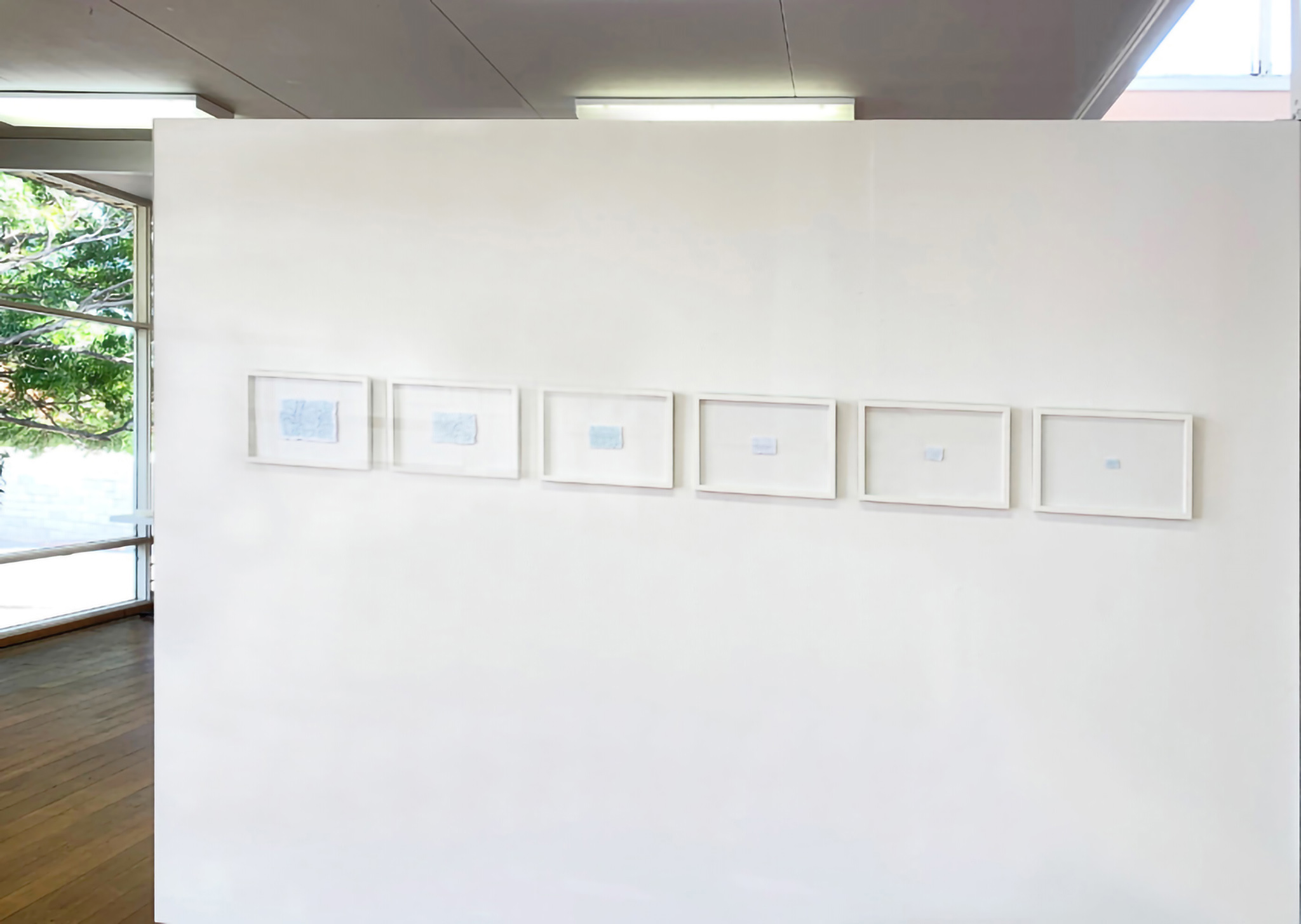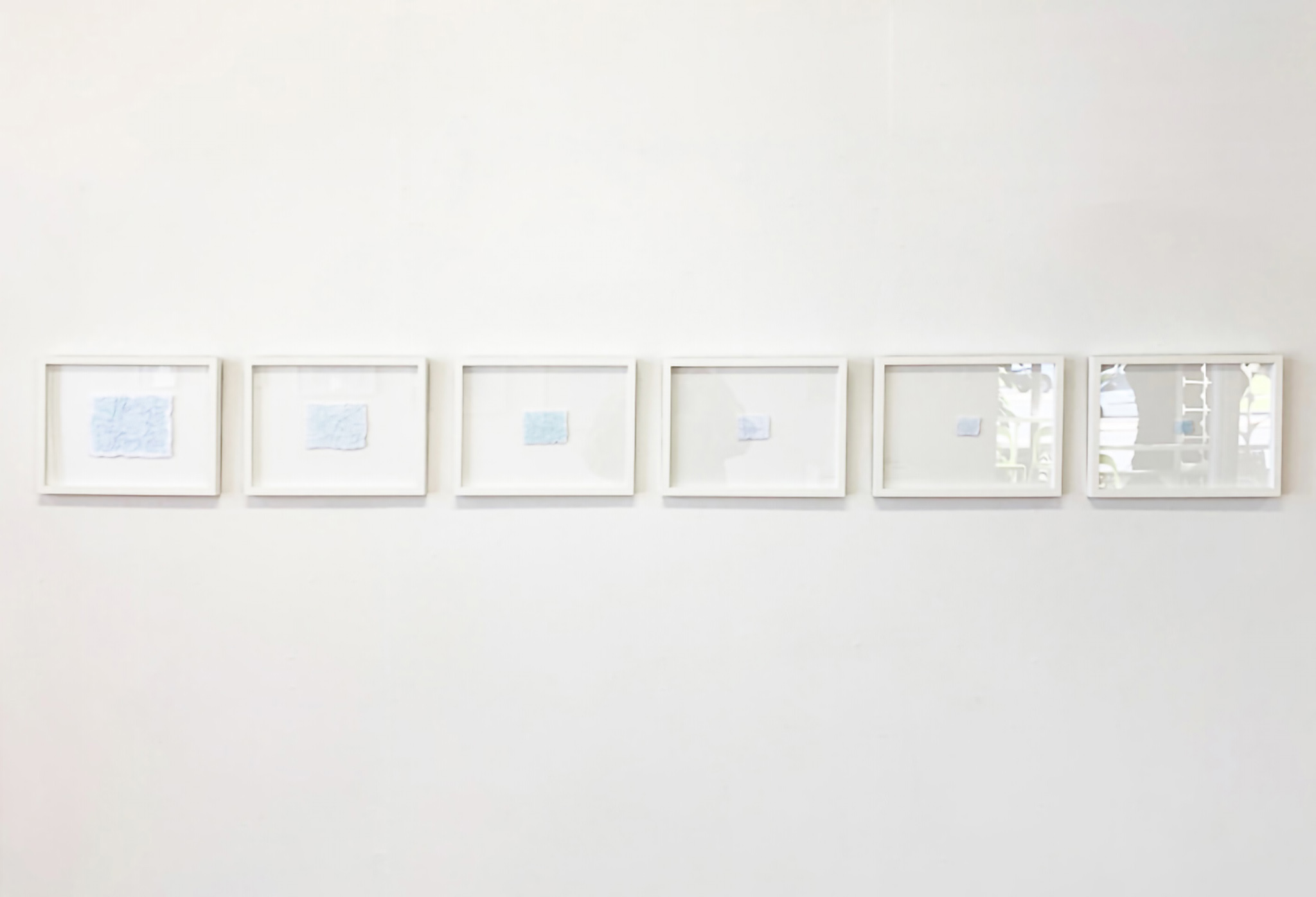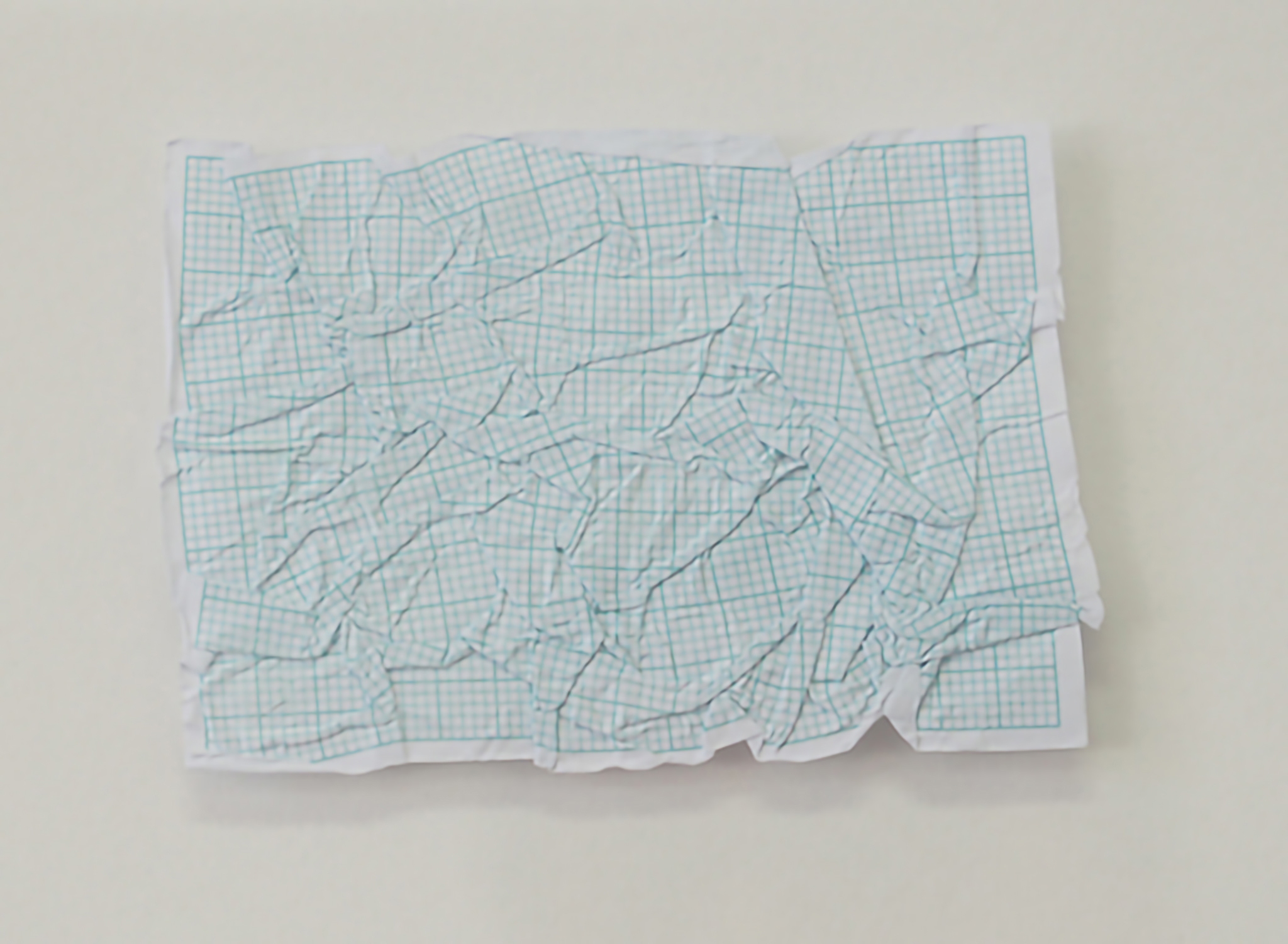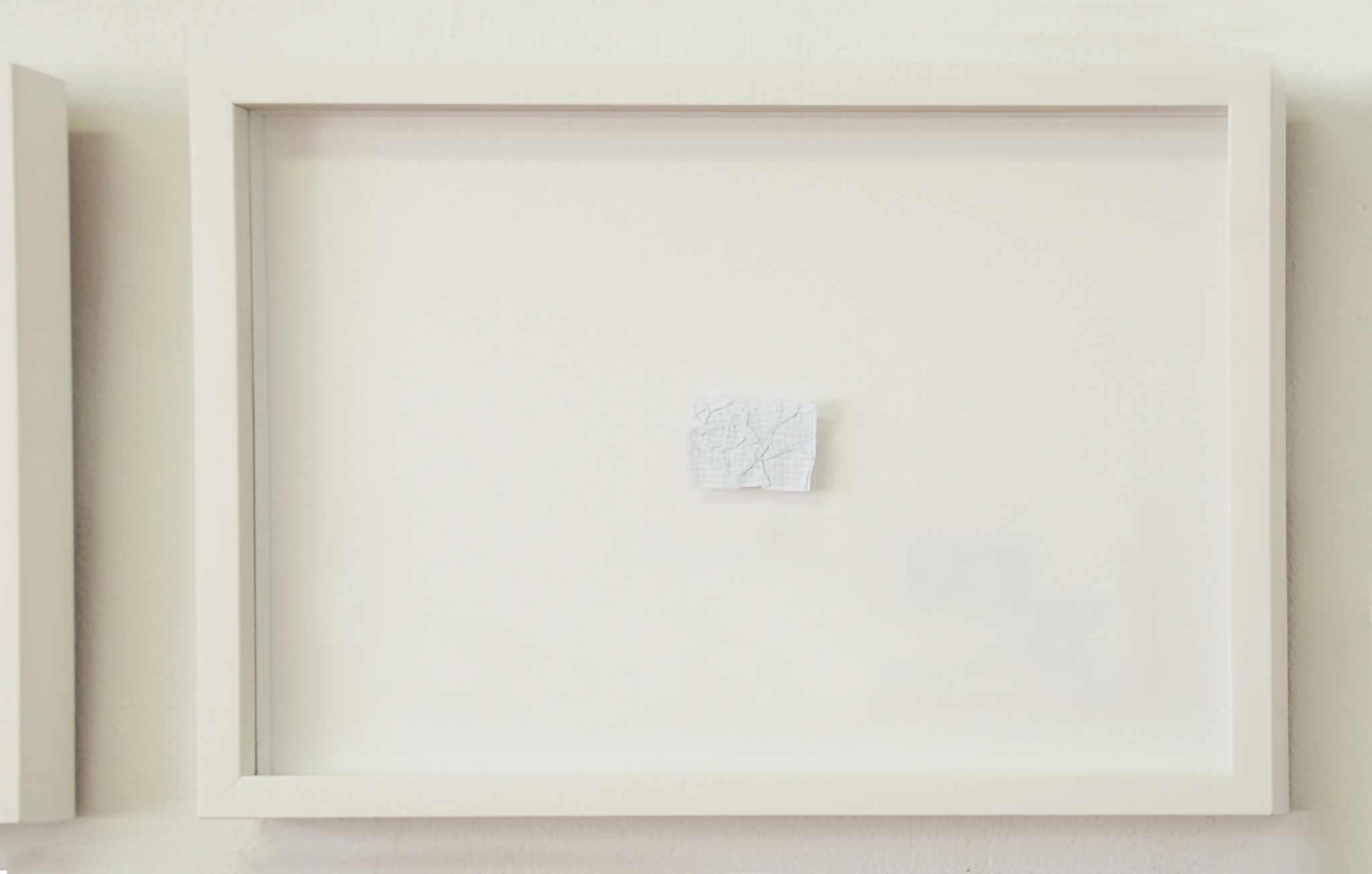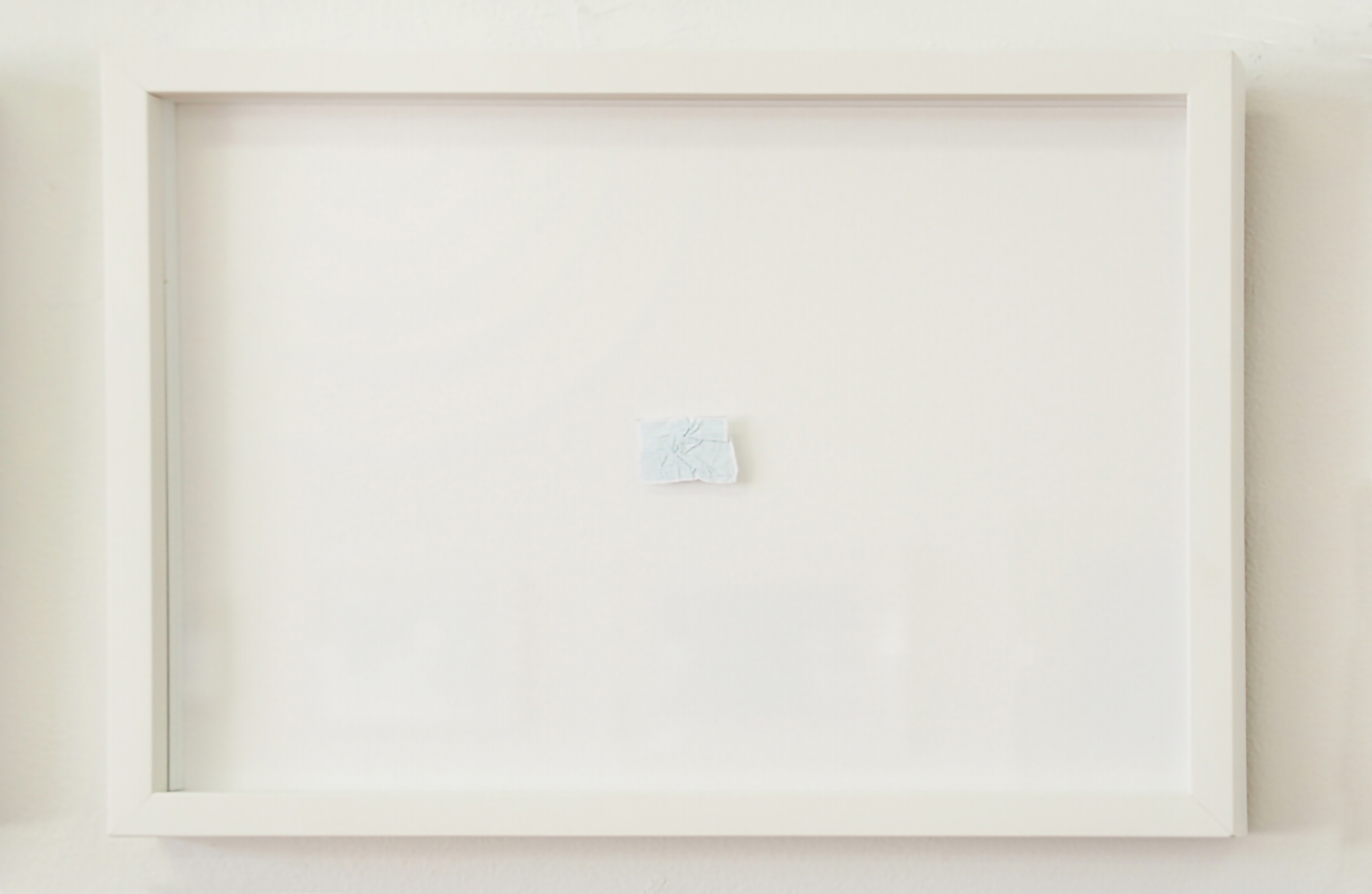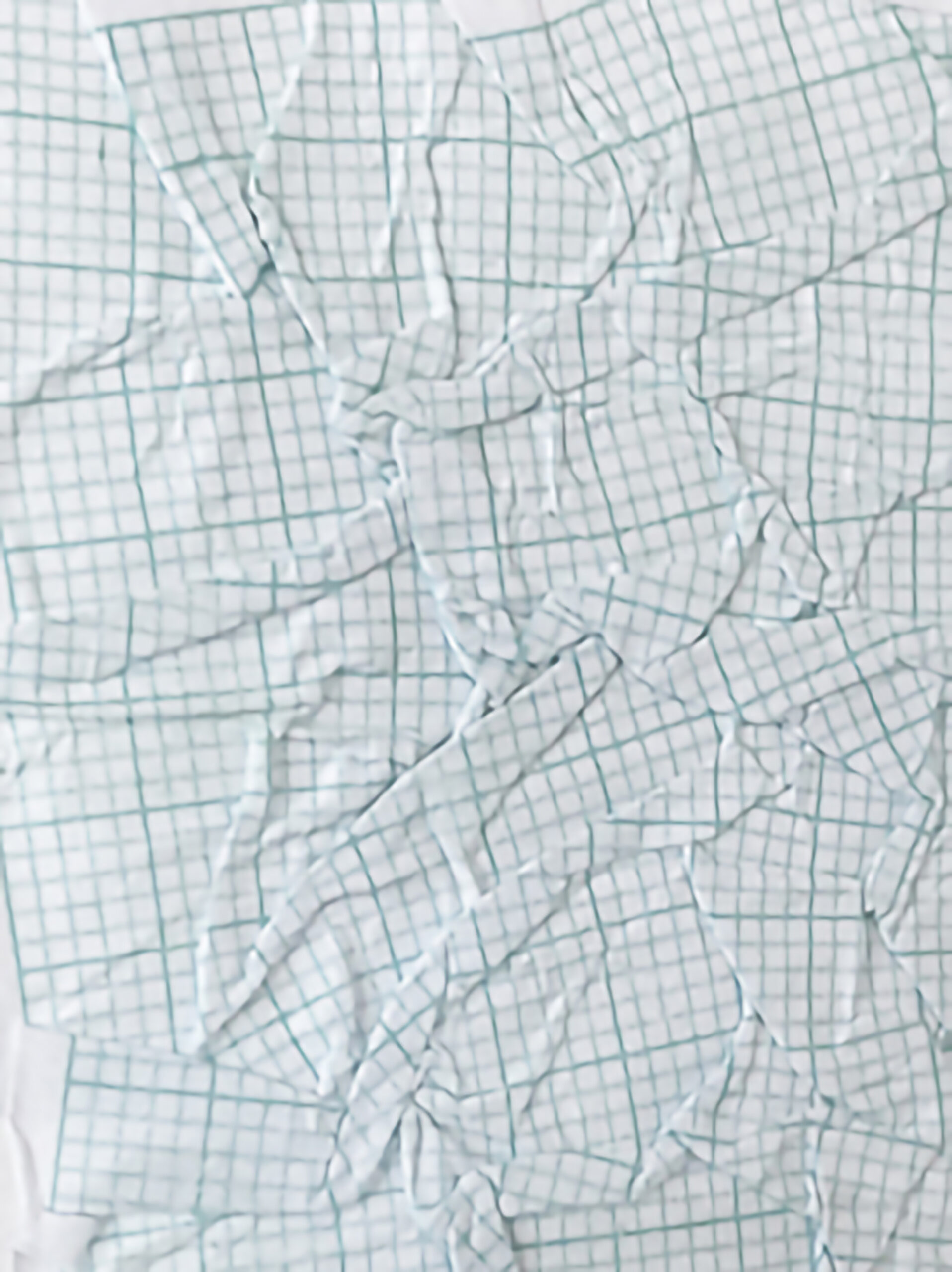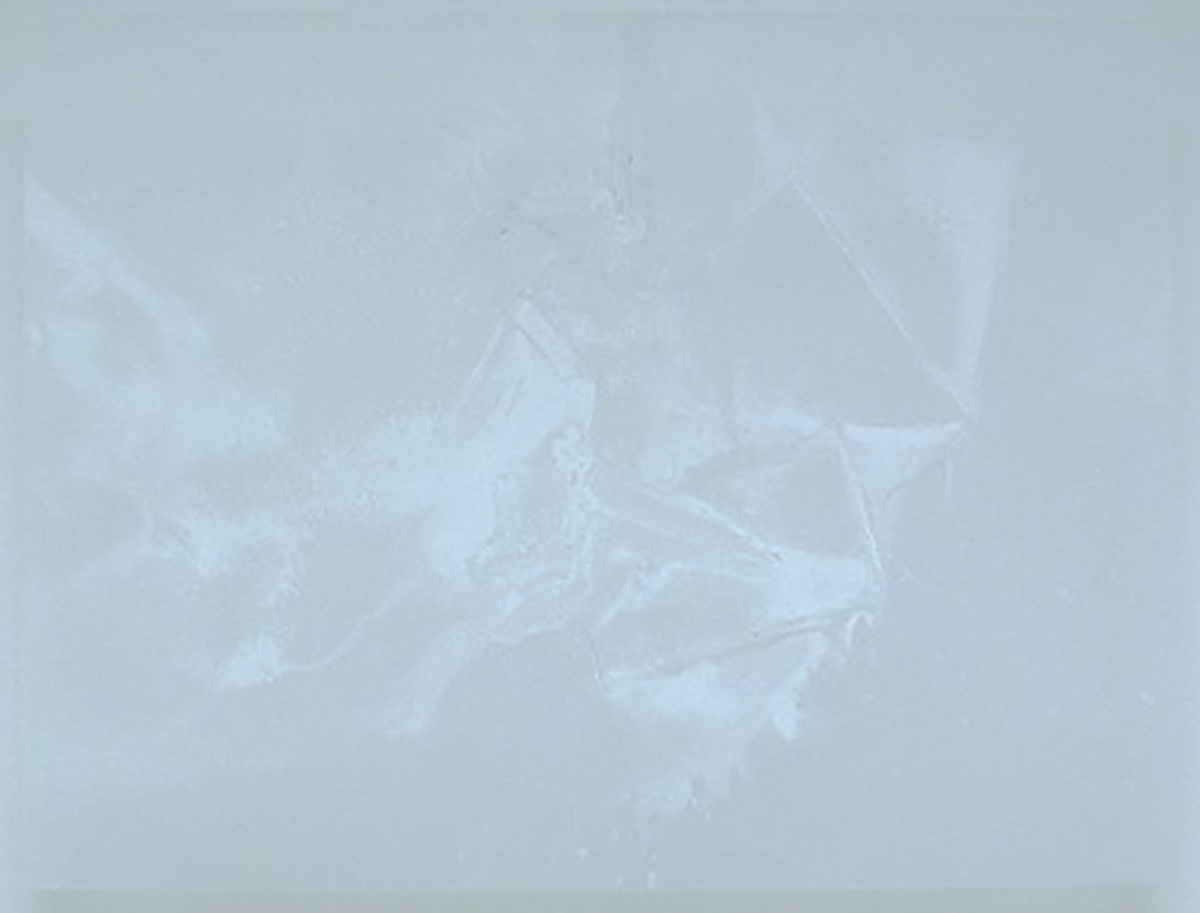In Altered Standards, Series A of standard sheets of graph paper are scrunched so that A0 becomes A1, A1 becomes A2… Each sheet is reduced as it changes in size and state.
It may be a pure coincidence that the scientist who gave us (indirectly) the standard paper system (Series A) was also a satirist. The beauty and logic of Georg Christoph Lichtenberg’s (1742-1799) invention is that it allows for scaling without compromising the aspect ratio. A0 halved along its length gives the width of A1. A1 halved gives A2 and so forth: width x square root of 2 = length.
Hence the order prevails in any office, as far as enlarging or reducing documents via photocopier may go. Or so it seems. For anyone who has ever tried this though, they may be ashamed to admit how many white sheets of A4 or A3 paper had to be sacrificed in the process.
Likewise, the graph paper was also implemented as a device to increase or decrease scale and was often used to measure or chart intangible visualisations. This idea is evidenced in the research of Luke Howard, a nineteenth century scientist who identified categories of clouds and used coordinate paper to chart barometric variations.
Apart from a fascination with standards and things designed to make life run smoothly, Misfits (alternative title) are also conceived as a drawings where the marks are created through manipulation of its surface rather than an additive process of superimposing or depositing another material upon its surface. As such, its ability to record and manipulate visualised data, spawns delusions of self-creation – the paper’s apparent autonomy in constructing its own identity.

